These Are the Least Crowded National Parks in America
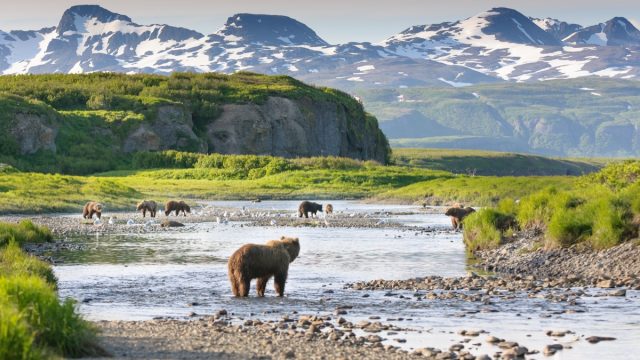
Yosemite, Yellowstone, the Grand Canyon… we’ve all heard of these outdoor wonderlands that attract millions of visitors every single year. But they are just a few of the 62 diverse national parks in America. If you venture beyond the most popular sites, you’re bound to find eye-popping landscapes of rugged mountain peaks, tropical rainforests, and mysterious islands—all of which you’ll have completely to yourself. Whether you’re looking for a solo outdoor adventure to the tune of Cheryl Strayed’s Wild or simply want a stunning view without any photobombing tourists, consider one of these uncrowded national parks.
1
Gates of the Arctic; Kobuk Valley; Lake Clarke, Alaska
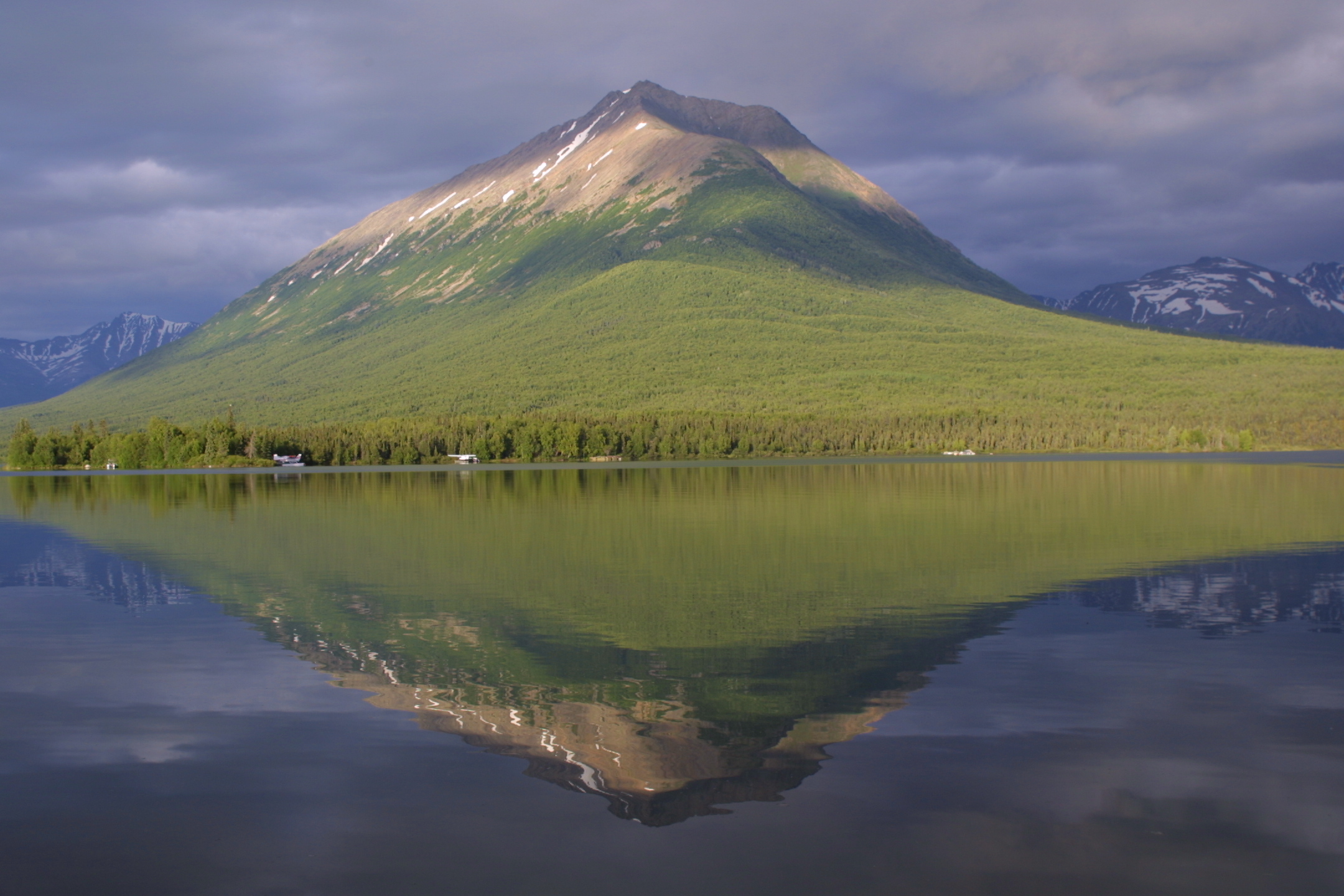
When you think of Alaska, you probably imagine the snowy mountains of Denali National Park or the cerulean blue glaciers of Kenai Fjords, but as it turns out, Alaska is home to many more underrated national parks. Gates of the Arctic, Kobuk Valley, and Lake Clark are the state’s least visited parks (in fact, all three saw fewer than 18,000 visitors in 2019) due to their remoteness. But if you’re looking for adventure, it’s worth going the extra mile to visit.
Gates of the Arctic is the northernmost national park in the country, and due to its lack of designated trails, visitors must be serious hikers. Then there’s Kobuk Valley, which looks like a scene from another planet—or at the very least, the Sahara Desert—with its giant sand dunes rising from the Arctic Ocean. Finally, Lake Clark is accessible only by plane from Homer or Anchorage, but the vast wilderness offers bear viewing, hiking, fishing, and kayaking on the stunning preserve.
2
Isle Royale, Michigan
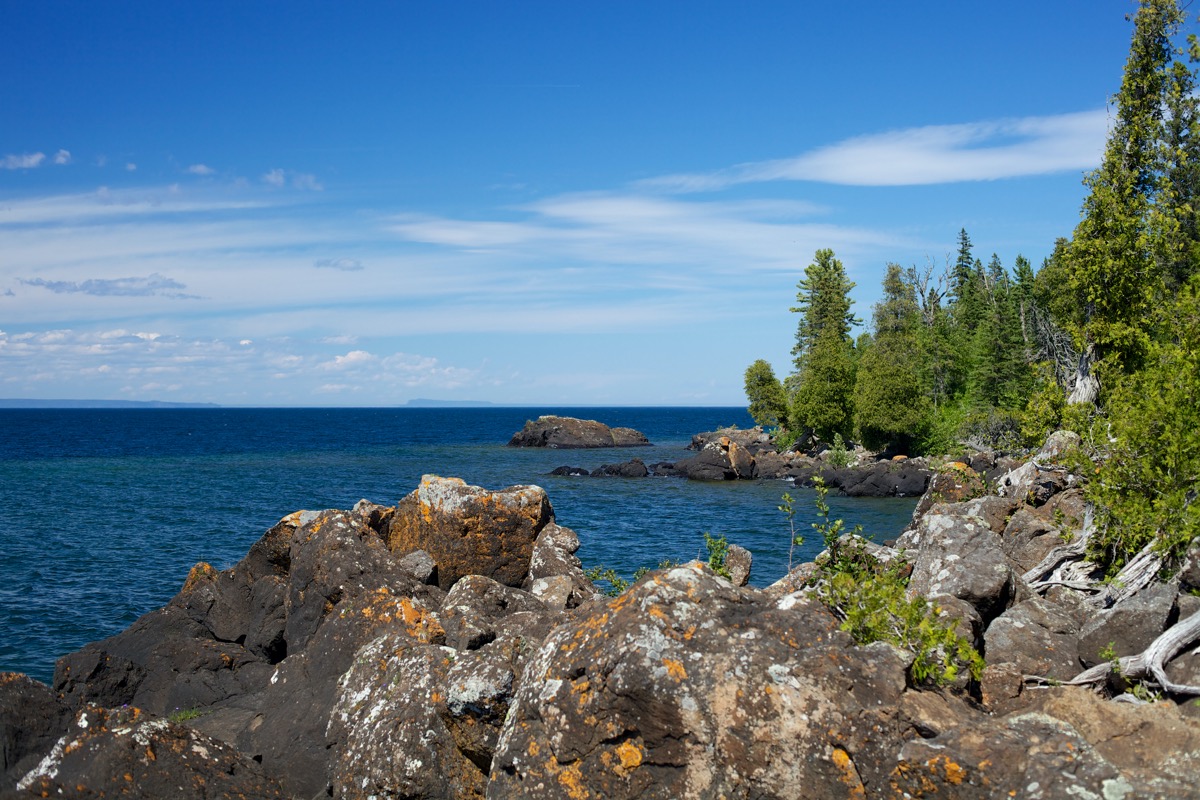
This park, which contains one large island and more than 200 smaller islands on Lake Superior, received just over 25,000 visitors last year. Originally designated as a national park in the 1930s to “to conserve a prime example of North Woods Wilderness,” Isle Royale’s off-the-grid location is one of its best qualities (it’s accessible only by boat and seaplane). Isle Royale boasts tons of wildlife, from red fox to grey wolves, which you can see directly from your campsite (there are no hotels here). If you visit at the right time, you might even be able to catch the Northern Lights dancing across Lake Superior.
3
North Cascades, Washington

If you enjoy visiting Mount Rainier or Olympic National Park, you’ll love North Cascades. This national park in Washington is known for its lush alpine meadows, snow-capped peaks, bright blue glacial lakes, and cascading waterfalls. Located just over two hours from Seattle, it’s surprisingly accessible for such a relatively unknown setting. There are 400 miles of scenic hiking trails, wildlife from bald eagles to grey wolves, and boating in Diablo and Ross Lakes.
Pro tip: Camping sites abound, but for those who prefer the comforts of a hotel room, the Lodge at Stehekin is a convenient option with unparalleled views of Lake Chelan.
4
National Park of American Samoa
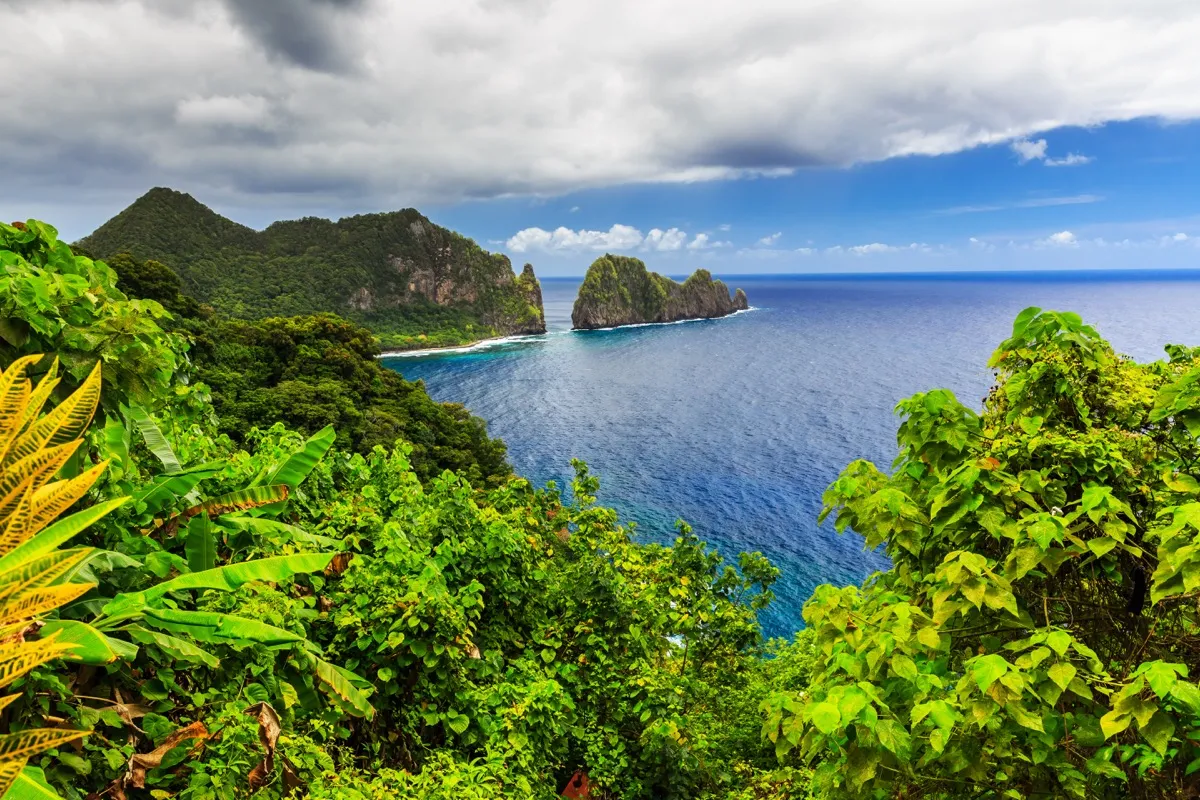
Ok, so maybe a trip to the South Pacific isn’t quite what you had in mind when you imagined your next U.S. national park adventure, but one look at this beautiful setting will probably make you reconsider. Located in the U.S. territory of American Samoa, a gem of an island not far from Tahiti and Fiji, the National Park of American Samoa spans the volcanic islands of Tutuila, Ofu, and Ta‘ū. It’s a must-visit for anyone hoping to have an exotic vacation around tropical rainforests and jutting coastline. Perhaps coolest of all is the fact that 4,000 acres of the national park can be found underwater in the form of colorful coral reefs.
5
Wrangell-St Elias, Alaska

It’s quite possible you’ve never even heard of Wrangell-St Elias, but it’s actually the largest national park in the country. In fact, with 13.2 million acres, it’s a whole six times the size of Yellowstone. This park is where four mountain ranges come together—the Wrangells, Chugach, Saint Elias, and the Alaskan Ranges—forming over a dozen of the highest peaks in the states. With its mountains, glaciers, forests, and volcanoes, much of the park is inaccessible by car and must be explored by foot or off-road vehicle, or propeller plane.
Pro tip: Although there are RV areas and campsites, we love bed and breakfasts like Kennicott Glacier Lodge.
6
Dry Tortugas, Florida
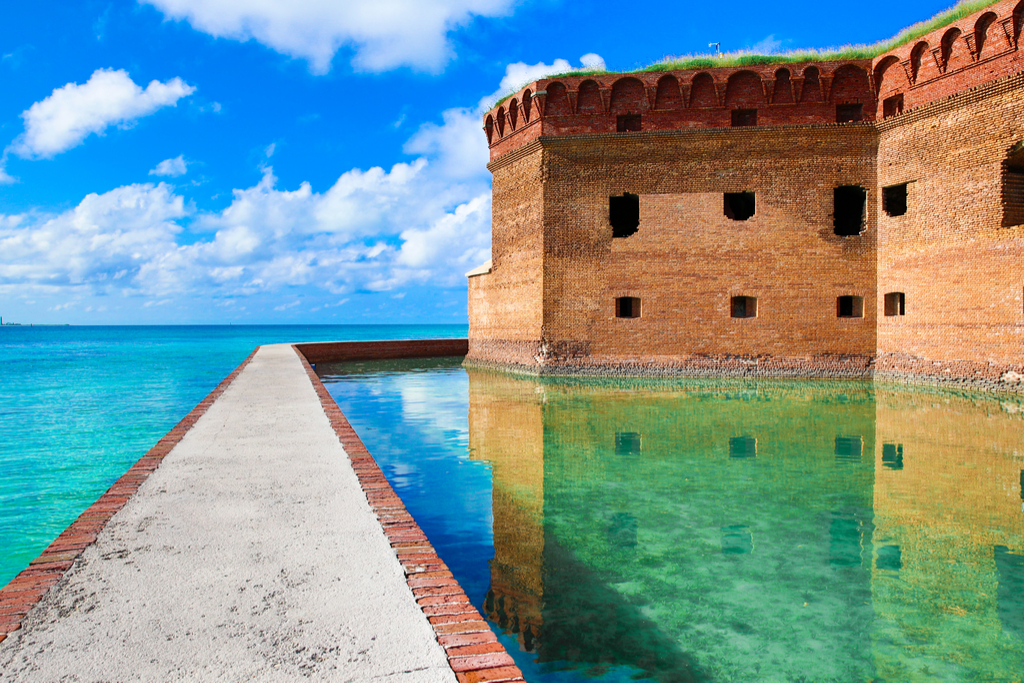
One of the most unique U.S. national parks, Dry Tortugas is located off of Key West, Florida in the Gulf of Mexico. It’s not the easiest place to get to. In fact, it’s accessible only by seaplane or boat, but the National Park Services operates a ferry, which is a two-and-a-half-hour scenic sail over turquoise waters. Dry Tortugas is a paradise for those who love being on the water. The most iconic spot in the park is historic Fort Jefferson, which was built after the War of 1812, but there’s also incredible snorkeling and diving along protected coral reefs, serious bird watching (there are over 300 species), sea turtle spotting, and camping under a sky full of stars.
7
Katmai, Alaska
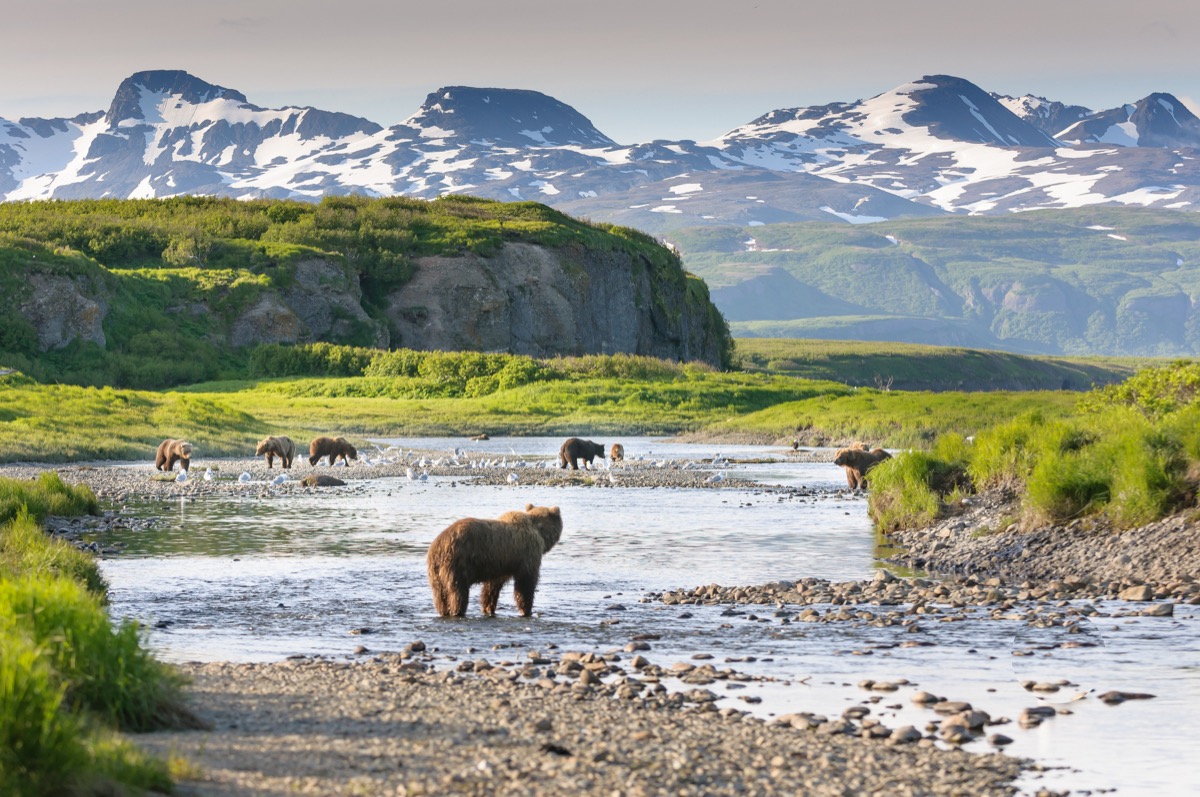
If there’s one reason to visit Katmai National Park in southern Alaska, it’s for the bear watching. It’s home to more than 2,000 brown bears, making it the largest population of protected bears in the country. July is the most popular month to visit, when the bears flock to Brooks River Falls to catch salmon. If you want to stay in the popular Brooks Camp during the peak months, reservations open in January and are often snagged in a matter of minutes. Katmai is also home to The Valley of Ten Thousand Smokes, a picturesque landscape of ash that was created when the Novarupta Volcano erupted in the 20th century.
8
Great Basin, Nevada
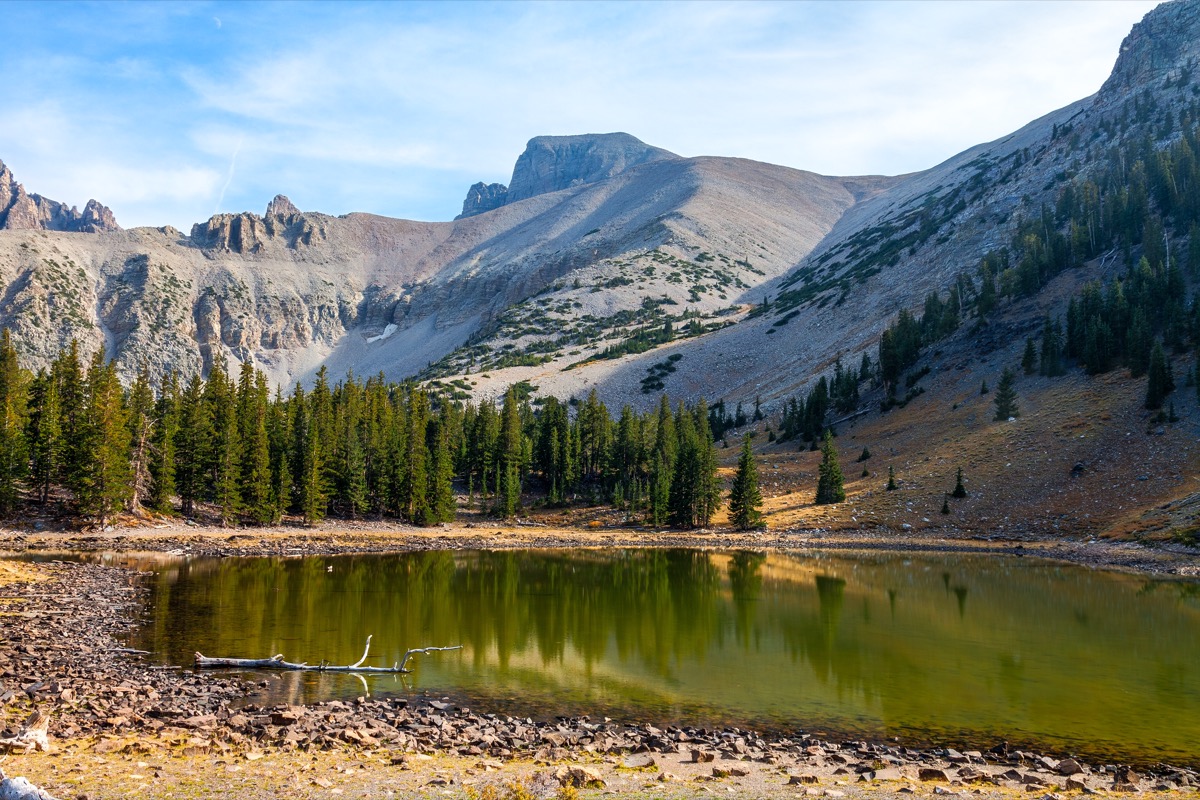
At this national park near the Nevada-Utah border you’ll find alpine lakes, the limestone and marble cavern called Lehman Caves, 60 miles of hiking trails, and prehistoric-looking bristlecone pine trees—some of the oldest trees on earth. One standout feature is what astronomer’s call one of the last true dark skies in the U.S. That means some pretty spectacular stargazing for those who visit. In fact, most summer nights you can see the Milky Way galaxy without the help of a telescope.
9
Virgin Islands
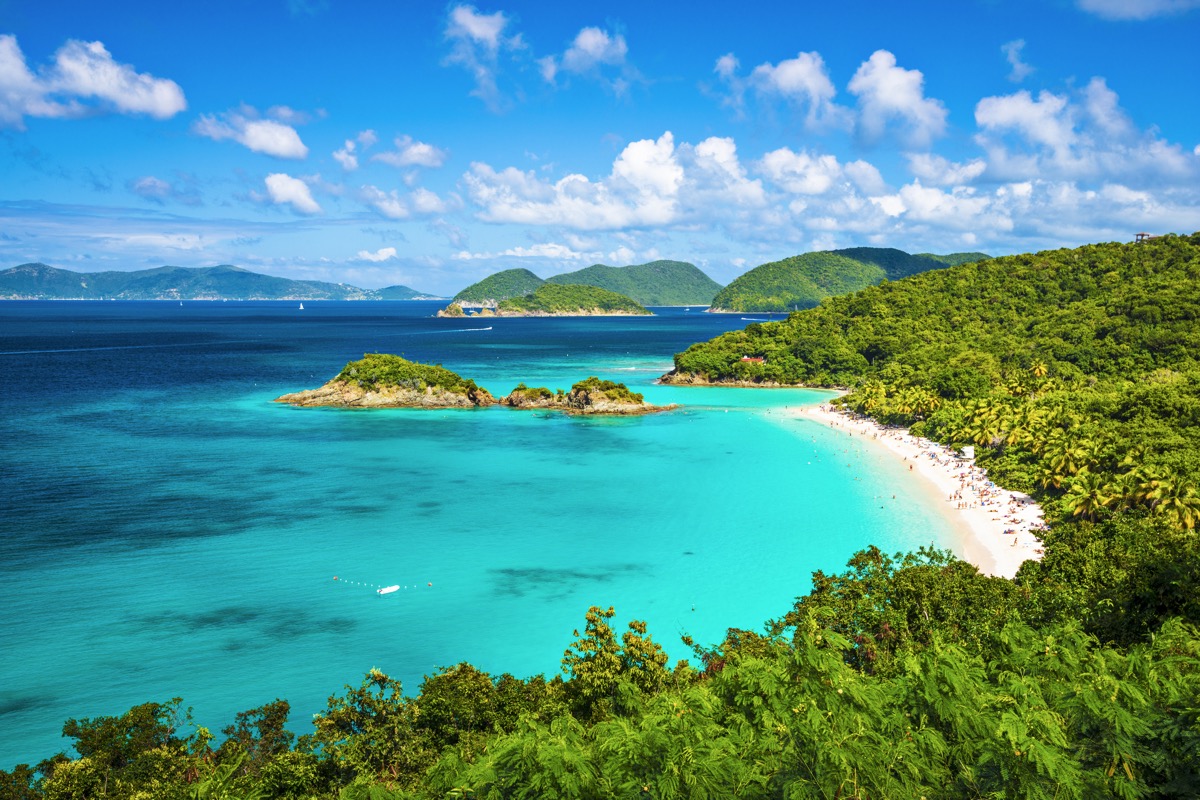
Although most national parks conjure images of mountains and rivers, Virgin Islands National Park is more of a tropical oasis occupying more than half of St. John. Imagine: Sugar-soft beaches surrounded by palm-fringed forests and crystalline Caribbean water. Two of the most popular beaches are Hawksnest Bay and Trunk Bay, both known for their vibrant coral reefs and marine life. One draw of Virgin Islands National Park is that it’s relatively easy to get to—which is why it’s so surprising that only 133,398 people went in 2019. Ferries run frequently to and from the national park, so you can make a day trip from the livelier island of St. Thomas.
10
Congaree, South Carolina
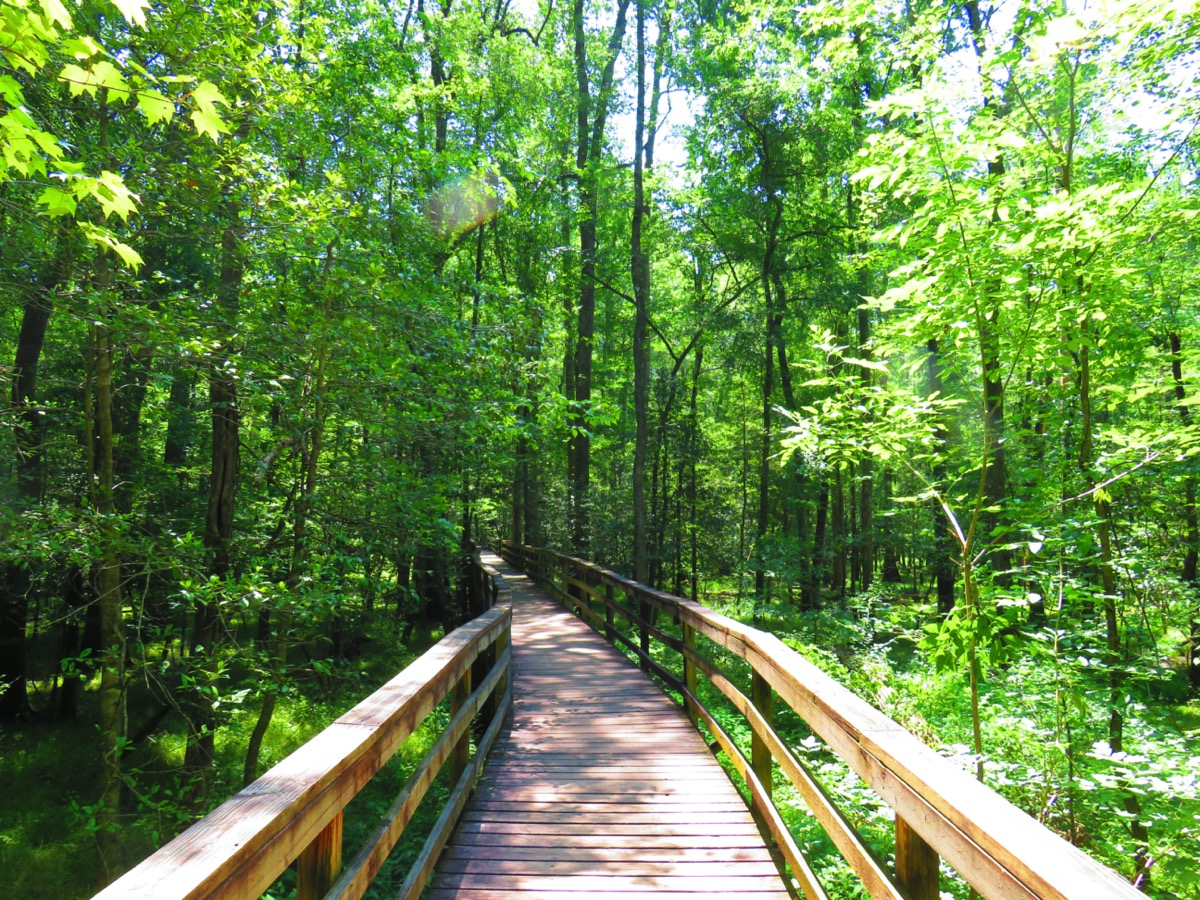
As the only national park in the state of South Carolina, Congaree is just a 30-minute drive from Columbia and less than two hours from Charleston. It’s home to the largest area of primeval forests, which have grown completely undisturbed for decades. You’ll also find towering Loblolly Pine and Champion trees, some of the tallest trees in the eastern U.S. The weather is almost always nice and mild, making Congaree a pleasant year-round destination for hiking, fishing, and bird-watching.
11
Pinnacles, California
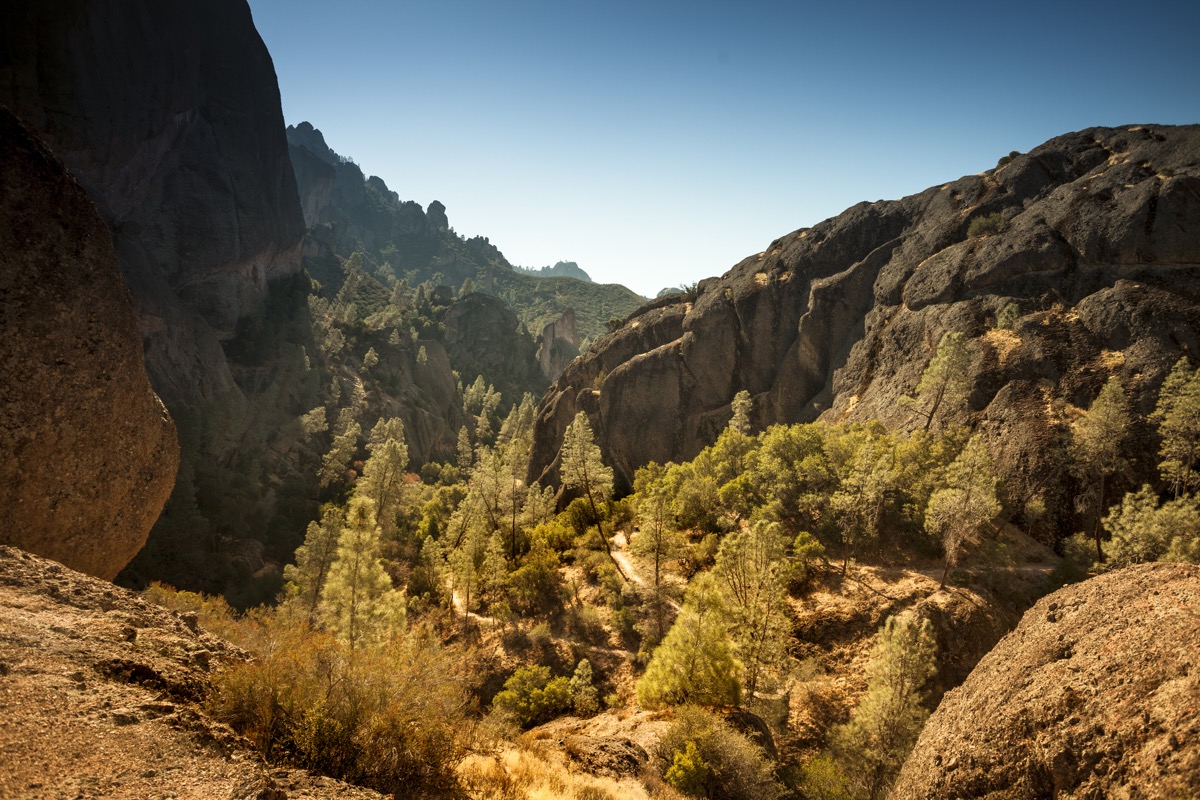
California is a hotbed for national parks like the perennially popular Yosemite, Joshua Tree, and Sequoia Parks. But this state also houses some underrated gems like Pinnacles in California’s Central Coast. Pinnacles only became a designated national park in the last decade, but the cliffs, formations, and caves within have millions of years of history. Some highlights include hiking the 30-plus miles of trails bordered by volcanic rock, exploring the Bear Gulch Caves and Balconies Caves, and rock climbing Machete Ridge. Just a short drive from Carmel-by-the-Sea and Monterey, Pinnacles is a unique stop along any Big Sur road trip.
12
Guadalupe Mountains, Texas

Guadalupe Mountains National Park offers visitors the chance to explore sand dunes, woodland canyons, steep mountain trails, and more. The park itself is part of an ancient fossilised reef, and it is best known as a heaven for avid hikers. It’s a wilderness park where you won’t find paved roads, motels, or even gas stations. To best see Guadalupe, you’ll have to go off-roading, travel by foot, and prepare to camp underneath the stars.
If you’ve never heard the term high-pointing, it’s the act of climbing to the highest point in each of the 50 states, and it draws many adventurers to Guadalupe Mountains. They seek out the 8.5-mile Guadalupe Peak trail, which climbs 3,000 feet to the highest summit in Texas.
13
Voyageurs, Minnesota

Voyageurs is a maze of connected waterways, bays, and lakes about five hours north of Minneapolis and just south of the Canadian border. Here, among the rustic shorelines and tiny islands, you’ll see why Minnesota is nicknamed the land of 10,000 lakes. For those who love the water, Voyageurs is not to be missed. Spend the days canoeing, kayaking, fishing, and exploring the intricate puzzle of lakes that blend into one another.
Pro tip: Many who come to Voyageurs trade tents for houseboats. Don’t worry if you don’t have your own—there are plenty of places to rent.
14
Kenai Fjords, Alaska
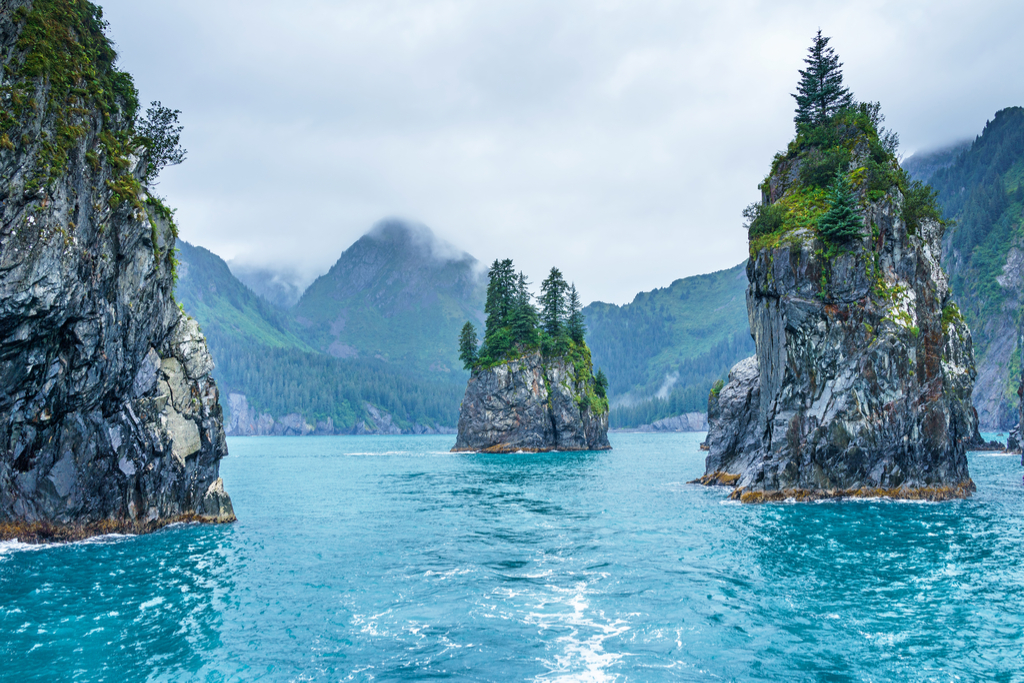
Kenai Fjords is the sort of place you’d never expect to find in your very own country. In fact, it looks more similar to Patagonia or Iceland than anything you might imagine in Alaska. Set on the southeast coast of the Kenai Peninsula just beyond the town of Seward, this park is a rugged and wild landscape of mountains and sea that has been carved out by glaciers and earthquakes. More than half of the park is covered by ice, and the main attraction is a series of 40 glaciers that rise from the Harding Icefield. Nature thrives in this cold, icy climate, and the chance to see moose, bears, sea lions, and porpoises is the biggest draw to Kenai. If you go, consider road tripping from Anchorage along the scenic Seward Highway, and if you’re seeking an incredible experience, sign up for a guided kayak tour of the fjords.
15
Channel Islands, California
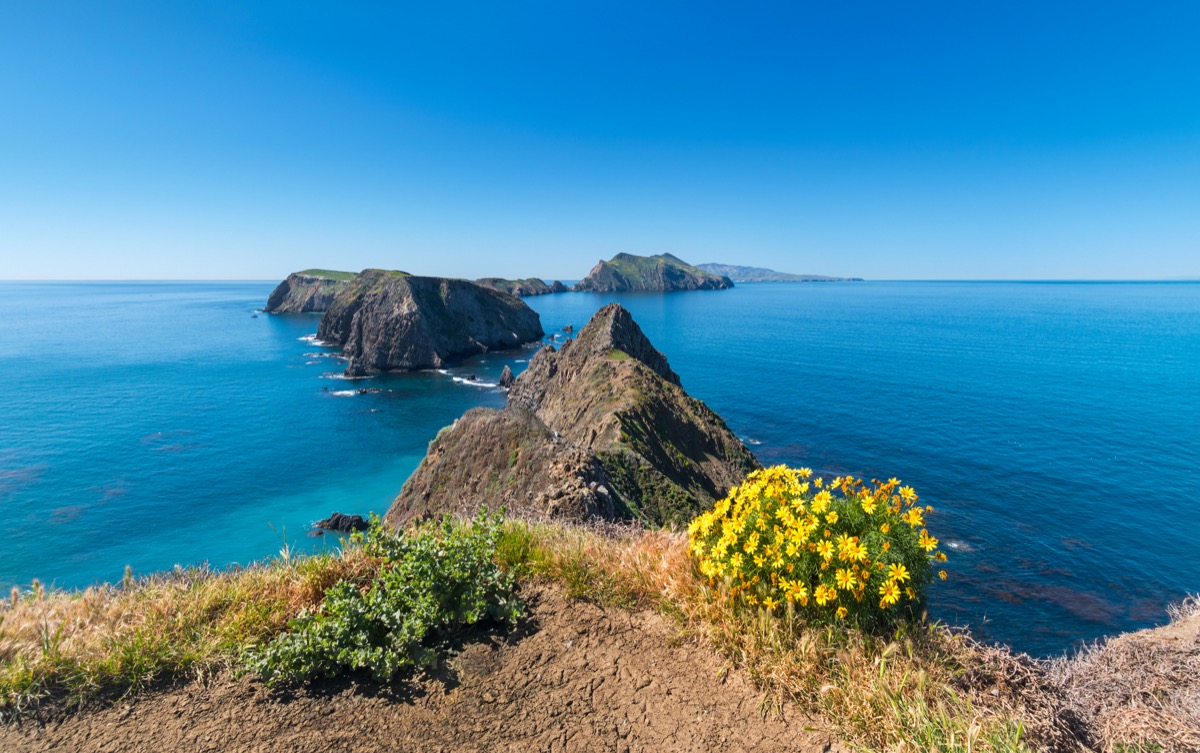
Just off mainland Southern California in the Santa Barbara Channel sit five islands—San Miguel, Santa Rosa, Santa Cruz, Anacapa, and Santa Barbara—which make up Channel Islands National Park. Each inlet has a slightly different flare: Santa Cruz is known for its sandy beaches and hiking trails, Anacapa for its jutting cliffs and dramatic landscape, and Santa Rosa for its sandstone canyons. To reach the park, you’ll have to travel by boat from Ventura Harbor or by plane, and once you arrive the best way to explore is by kayak. All year, you’ll find spectacular marine life from grey whales and dolphins to sea otters and seals, but the most popular time to visit is during the summer, when the weather is warm and sunny and you can watch schools of migrating humpback whales.
16
Black Canyon of the Gunnison, Colorado
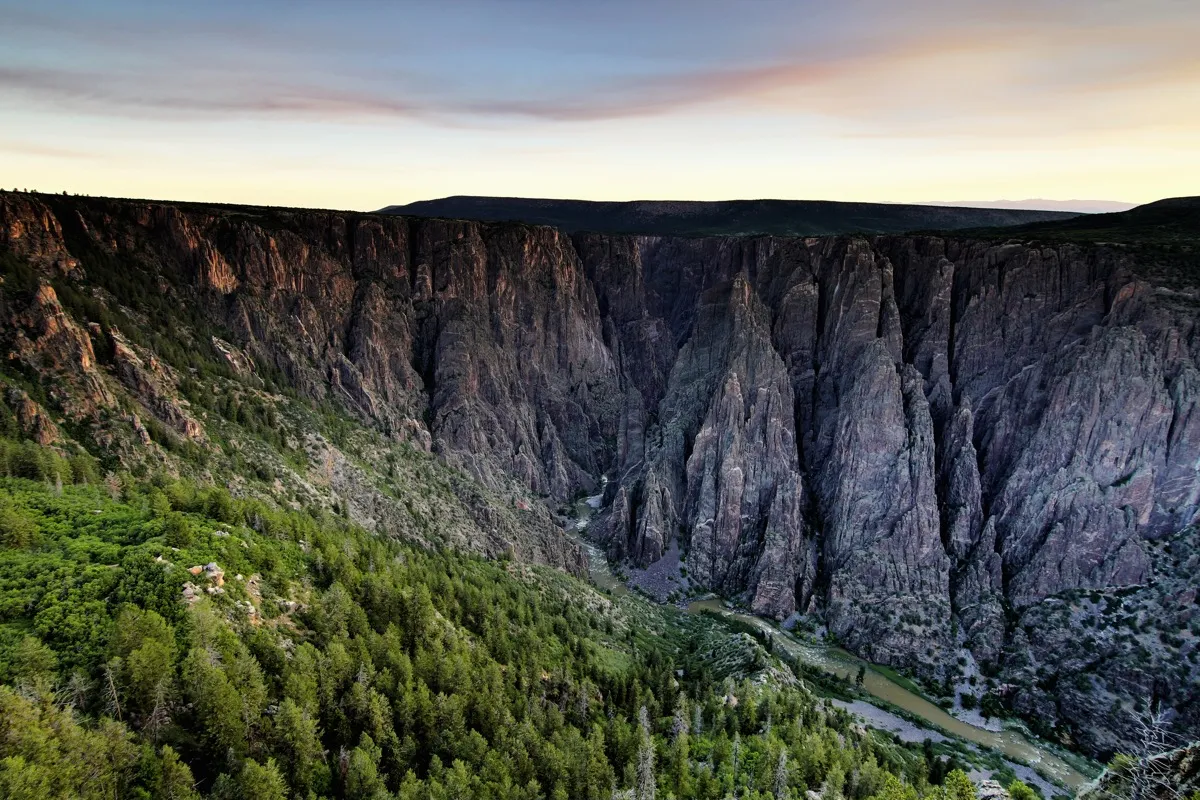
Located in western Colorado, Black Canyon is the state’s deepest canyon. But this awe-inspiring gorge, which looks down over 2,000 feet into vast nothingness, is surprisingly the least visited park in Colorado. Black Canyon gets its name from its dark walls that are usually covered in shadows. While there aren’t many great hiking trails, there are scenic view-points accessible by car on both the north and south rim. It also happens to be an International Dark Sky Park, meaning it’s one of the best places on the planet to see stars.
17
Carlsbad Caverns, New Mexico
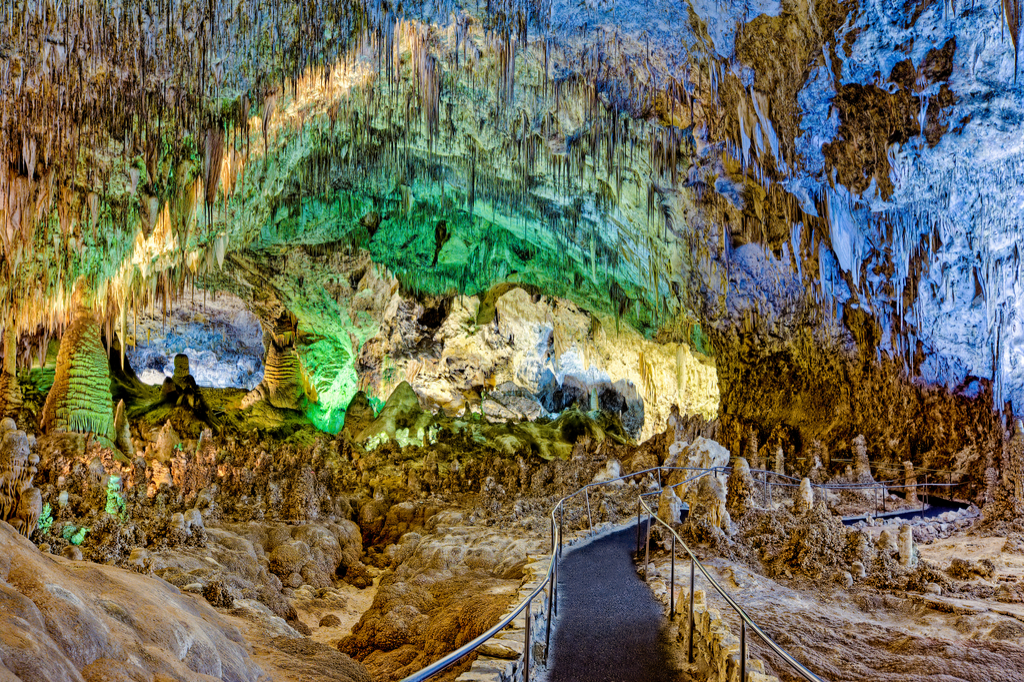
Part of Carlsbad Caverns’ low foot traffic is due to its relatively isolated location—in fact, the park is a full day’s trek from any other attraction in the American southwest. But for anyone interested in geology and rock formations, this underrated park located in New Mexico’s Chihuahuan Desert is a must-visit. It contains over 100 limestone caves and gorgeous rock formations, which, together, comprise one of the oldest cave systems in the world. The two most visited caves are Carlsbad and Lechuguilla, known for its low-hanging gypsum chandeliers, but if you journey off the beaten path, there are dozens of unique formations you can explore in solitude.
18
Big Bend, Texas
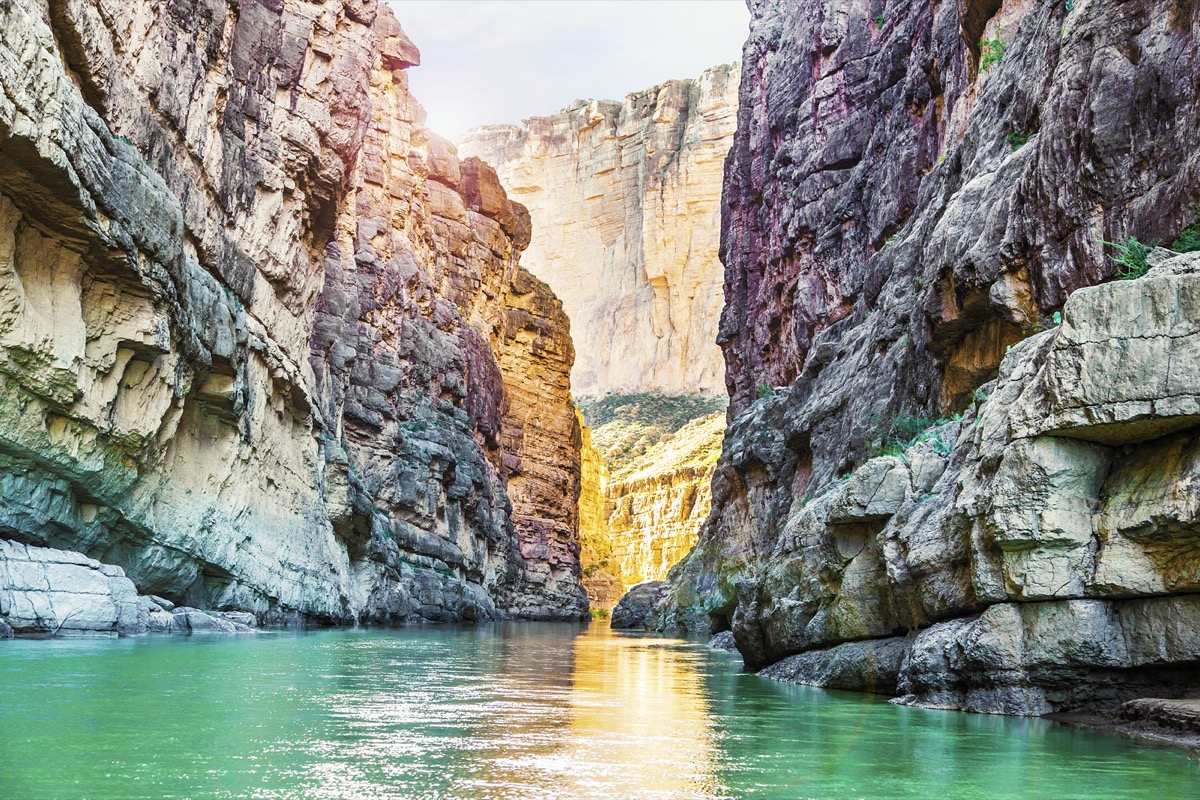
Though you’ve probably heard of Big Bend, chances are you’ve never visited first hand. Separated from Mexico by the Rio Grande river, this national park attracts fewer than 500,000 tourists per year, paling in comparison to Grand Teton, Rocky Mountain, and Yosemite, all of which rake in millions. Home to the Chisos mountain range and part of the Chihuahuan Desert, you’ll find diverse landscapes and natural attractions from canyons to hot springs.
One of the highlights is hiking or paddling in Santa Elena Canyon, where 1,500-foot walls rise above the winding Rio Grande River. Even if you’re not an avid hiker, you can get some incredible views cruising down the Ross Maxwell Scenic Drive. It cuts through the park and offers glimpses of the stunning mountains stretching into the desert.
19
Redwood, California
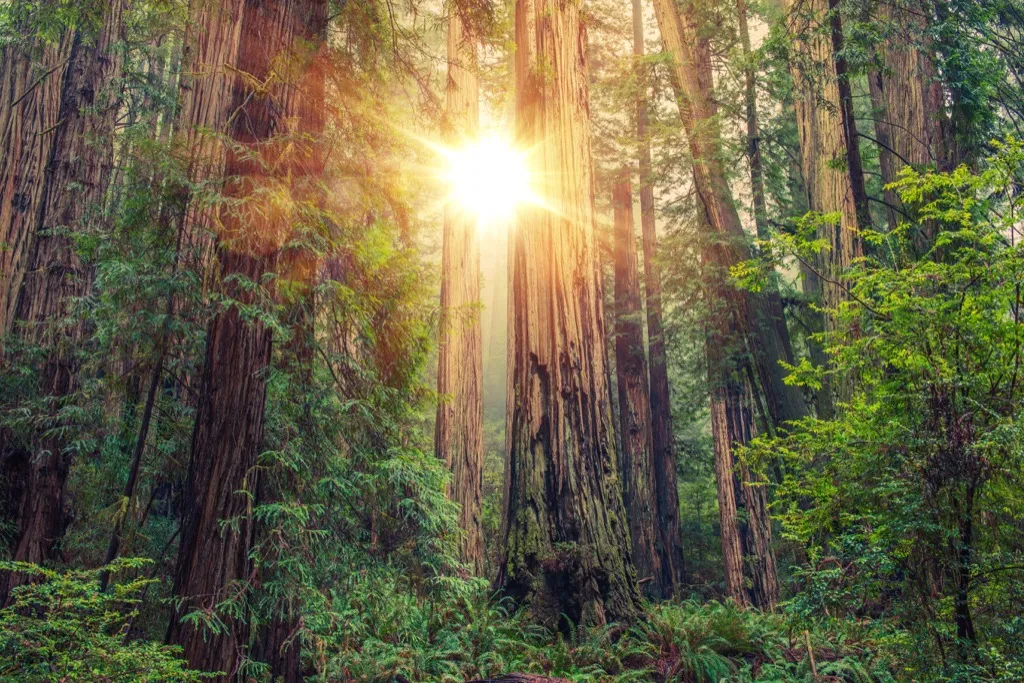
Surprise! Redwood National Park in Northern California is one of the least busy national parks in the country. And frankly, we’re not sure why. After all, it is home to thousands of towering, primordial redwood trees, which can live as long as 2,000 years and rise taller than the eye can see. You might recognize the almost prehistoric-looking setting from scenes of E.T. and Jurassic Park. The land is flat, so it’s ideal for hiking and biking through the forest and exploring the 40-mile stretch of Pacific Coast.
20
Lassen Volcanic, California
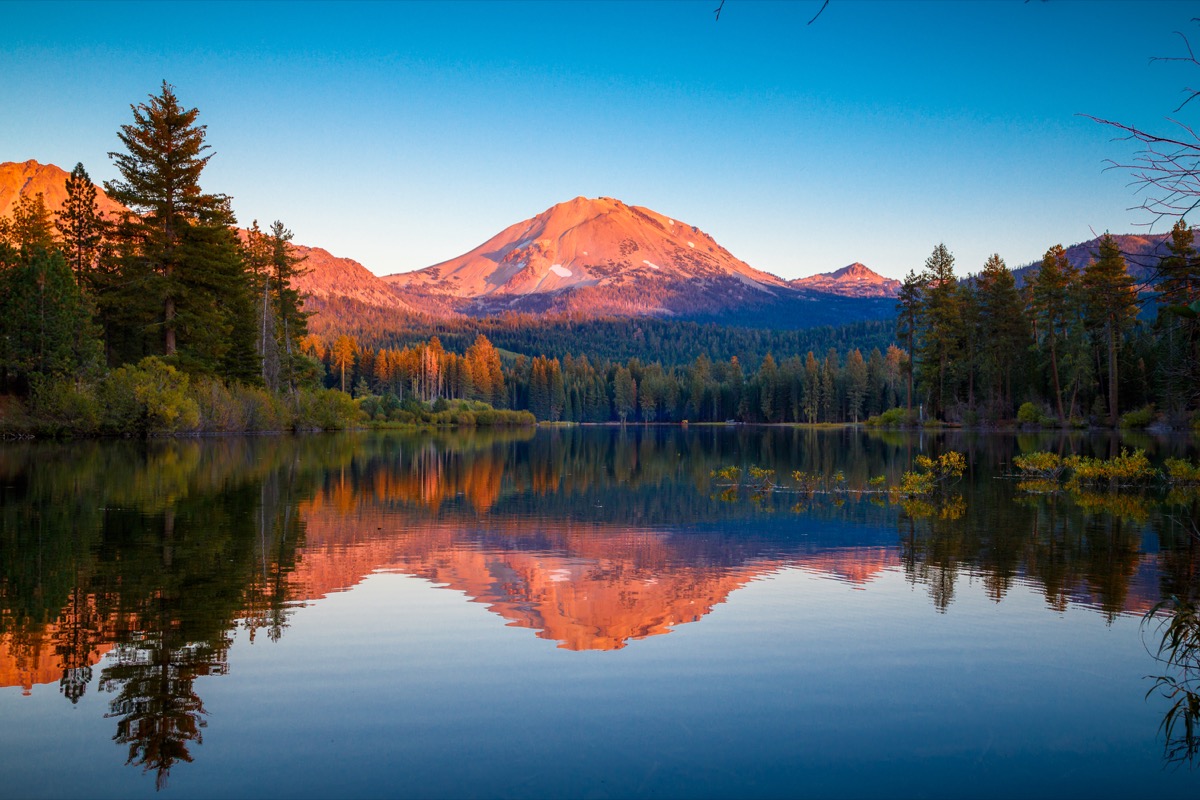
Another northern California attraction, Lassen Volcanic National Park, brought in just over 500,000 visitors last year. The park’s namesake volcano, Lassen, blew in 1914 and continued to erupt for three years. The result is a fascinating landscape of lava rocks, bubbling sulphur springs, and barren trails leading to shimmering glacial-fed bodies of water like picturesque Manzanita Lake, a popular spot for kayaking, fishing, and camping.
You’ll find geothermal activity all over the park, and there are more than 150 miles of hiking trails that range from leisurely walks to strenuous climbs. The best known trek, the Lassen Peak Trail, runs about six miles and boasts some incredible views of the High Sierra Mountains. Because the park is open 24 hours a day, this route is especially popular at night under a full moon.
21
Great Sand Dunes, Colorado
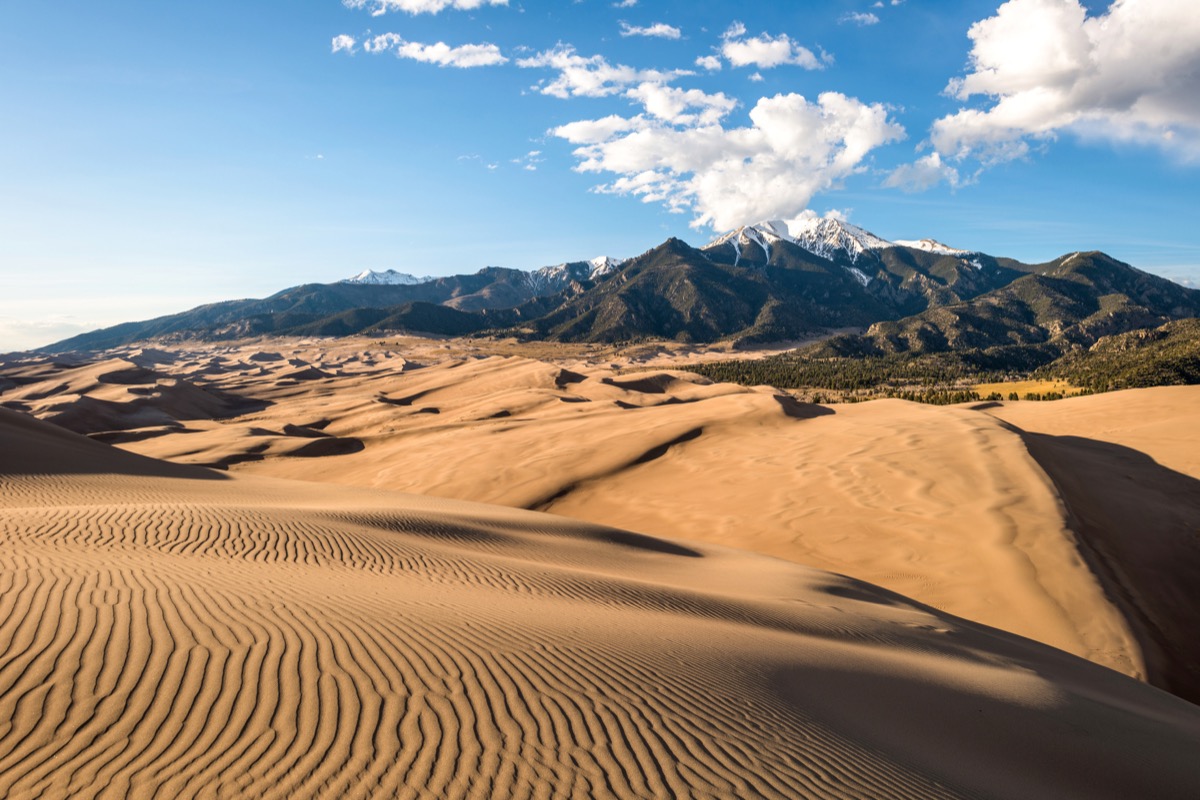
Located in Eastern Colorado, Great Sand Dunes National Park is one of the more unique landscapes in the country. It consists of 30 square miles of sand dunes, surrounded by the San Luis Valley to the west and the snow-kissed Sangre de Cristo Mountains to the east. Sledding and snowboarding down the dunes is a popular park activity. A two-hour hike up High Dune gets you to the 699-foot peak where you can take in incredible views of Star Dune, the tallest dune in the country. But there is plenty to see and do beyond the sand dunes. The Sangre de Cristos offer alpine trails and there’s also swimming in Medano Creek.
Pro tip: If you visit during the spring or summer, you might catch a natural phenomenon known as a surge flow, when waves from the creek roll into the dunes.
22
Mammoth Cave, Kentucky
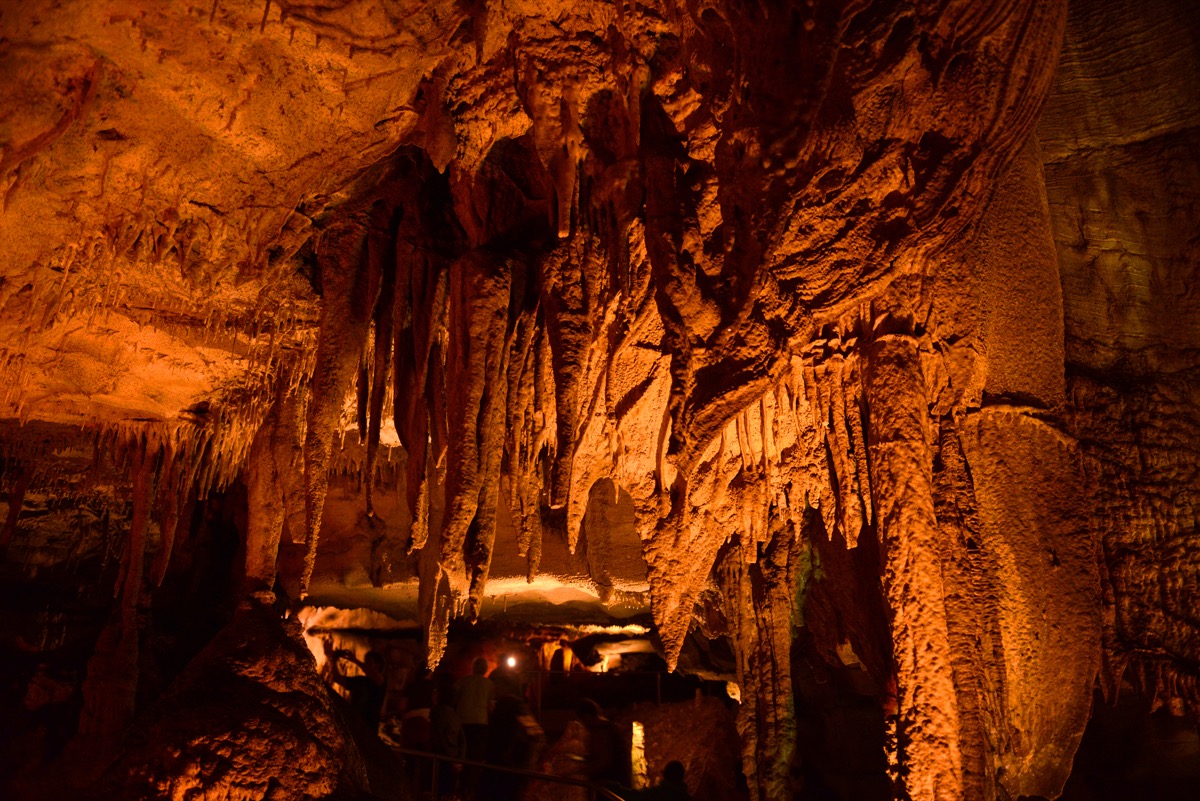
With its 400 miles of caves and passageways, Mammoth Cave National Park houses the world’s longest known cave system and 50,000 acres of forests. That means there are trails to explore both above and below ground. Mammoth Cave is a family-friendly trip due to its moderate, paved walking trails and unique geology that kids will fawn over. In order to explore the limestone rooms and narrow passageways, you’ll need to sign up for a guided tour, but you can explore the nature trails entirely on your own. Also, don’t miss Green River Bluff trail, a 2.4-mile hike through lush forests with views of the tranquil river and springs.
23
Mesa Verde, Colorado

A trip to this Southwestern park might convince you that you’ve traveled back in time to an ancient civilization. Here you’ll find hundreds of preserved sandstone and mud mortar Pueblo dwellings built between the 6th and 12th centuries. The most famous of the architectural sites are Cliff Palace, Balcony House, and Square Tower House.
In addition to the cliff dwellings, Mesa Verde is a postcard of the American Southwest. Cortez, the gateway to Mesa Verde, provides access to two scenic byways. There’s the 116-mile Trail of the Ancients, a must for archeology buffs, and the more famous San Juan Skyway, a 236-mile loop that traverses through old mining and mountain towns like Durango, Mancos, Telluride, and Dolores.
24
Kings Canyon, California

Chances are you’ve heard of Sequoia National Park in California’s southern Sierra Nevada mountains. But maybe you’ve never discovered its neighbor: Kings Canyon. Despite being adjacent to Sequoia and sharing similar scenery, Kings Canyon attracts only half the visitors compared to its sibling. The highlight of the park is its namesake gorge that separates the two neighboring national parks.
Pro tip: North Grove Loop Trail is perfect for a forest hike surrounded by towering Sequoia trees. Meanwhile, serious backpackers will love Glen Pass, which makes up part of the Pacific Crest Trail.
25
Petrified Forest, Arizona
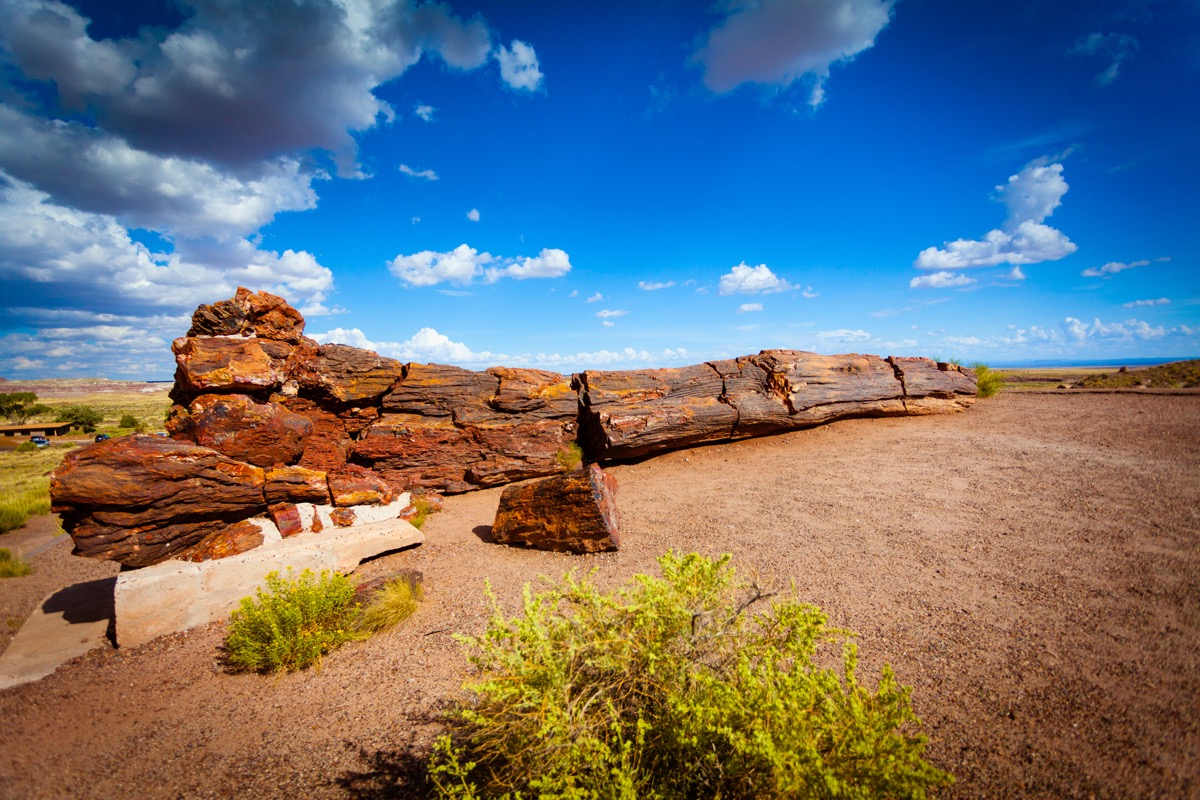
Petrified Forest National Park is an otherworldly landscape you probably wouldn’t expect to find in the U.S. Located in northeastern Arizona, about two hours from Sedona and Flagstaff, this desert park contains an array of colorful rock formations and one of the world’s largest concentrations of petrified trees, dating back over 200 million years. The best time to visit is in early fall when wildflowers bloom in the meadows and temperatures are mild. One of the park’s main attractions is the Painted Desert, a vibrant and undulating landscape of hues that seems to appear magically from the arid, flat plains.
Want to learn some trivia? Here is One Fascinating Fact About Each of America’s National Parks.